Toshiba Plant Systems & Services CorporationCommemorated its Centennial Anniversaryin October 2023.
ScrollCentennial Anniversary Logo

Our centennial anniversary logo features motifs representing various aspects of our business, notably our engineers who have created our history and traditions. The rainbow colors symbolize our aspiration to build and sustain a bright future for the next 100 years and beyond.We would like to advance boldly into the future, using this logo as a symbol of our centennial anniversary.
Message from the President
100 Years of Supporting the Safety and Security of Society and Industry
Toshiba Plant Systems & Services Corporation has commemorated its centennial anniversary, marking the passage of 100 years since the Sanko Electric Office was founded by Takuji Tsubokawa in October 1923 to restore factories, power generation facilities, and substations damaged by the Great Kanto Earthquake. I would like to express my deepest appreciation to all my predecessors and all the people who have supported us over the years.
Despite all the changes that have occurred in society over the last 100 years, Toshiba Plant Systems & Services, as a general engineering enterprise, has contributed to social and industrial development through reliable technologies. Our mission has always been to help build social and industrial infrastructure that offers safety and security to people.
For the next 100 years and beyond, we will continue to accord the highest priority to human life, safety, and compliance in all our business activities, endeavoring to merit the longstanding trust of society in accordance with the Basic Commitment of the Toshiba Group, “Committed to People, Committed to the Future.”
We would greatly appreciate your continued guidance and support.
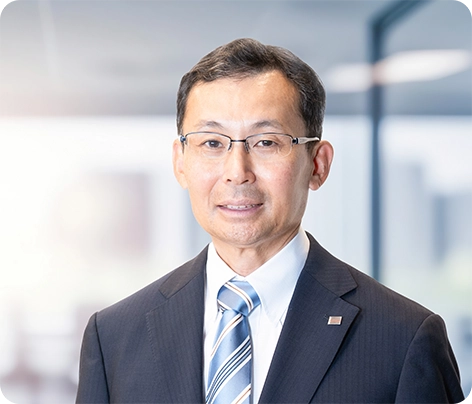
Toshiba Plant Systems & Services Corporation Takao Konishi, President and Chief Executive Officer
100-Year History
-
Recovery from the Great Kanto Earthquake
As Takuji Tsubokawa, an engineer with Shibaura Engineering Works Co., Ltd. (now Toshiba Corporation), engaged in inspection and maintenance work all over Japan, he considered the necessity of an engineering firm directly affiliated with manufacturers. Seeing the devastated machines at the factories, power plants, and substations affected by the Great Kanto Earthquake, Takuji Tsubokawa established the Sanko Electric Office in October 1923, which was located at his residence in Minami-cho, Ushigome Ward (now Shinjuku Ward), Tokyo. In the same year, Tokuei Noguchi, also an engineer with Toshiba, founded Noguchi Hiroyasu Electric Constructor's Office in Daikon-gashi, Kyobashi Ward, Tokyo, which subsequently became one of the predecessors of Toshiba Plant Systems & Services.

Main Banquet Hall in the First Main Building of Tokyo Kaikan (Courtesy: Tokyo Kaikan Co., Ltd.) -
〜
Industrial development spurred by the electrification
The Sanko Electric Office was renamed Sanko Electric Co., Ltd. in October 1938. Noguchi Hiroyasu Electric Constructor's Office was renamed Denryoku Kogyo K.K. in 1939 and then Shinko Denryoku Kogyo K.K. in 1941. Forming capital tie-ups with Toshiba, both firms were contracted to install power generation facilities and other equipment and carry out installation design and supervision for Toshiba. As heavy industries developed and military demand increased, Sanko Electric and Shinko Denryoku Kogyo became indispensable partners for Toshiba. With the outbreak of World War II in 1939 followed by the Pacific War in 1941, Sanko Electric and Shinko Denryoku Kogyo were deluged with work from both public and private military sectors. However, after the war ended in 1945, both firms suffered extreme hardships because of a sharp decline in orders due to economic turmoil and the impact of U.S. occupation policies.
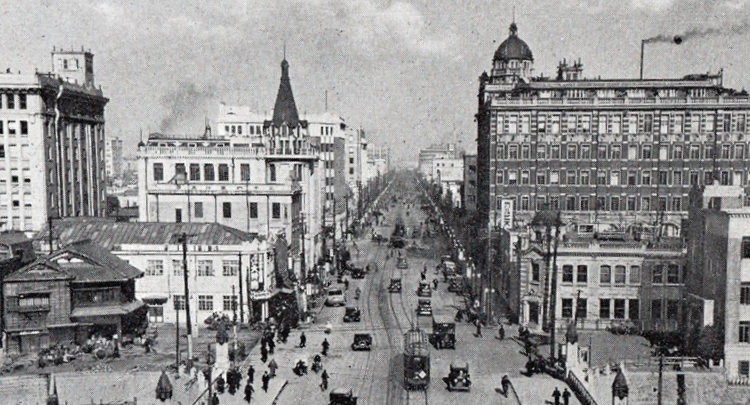
Minami-denma-cho, Kyobashi Ward (present-day Kyobashi, Chuo City) where the Sanko Electric Office was located -
〜
Brisk capital investment and electric power development for post-war restoration and economic growth
Accompanying restoration in the aftermath of war, the economy began to pick up as industry made large investments in plant, equipment, and electric power development. In 1950, Shinko Denryoku Kogyo changed its name to Shibaura Construction Co., Ltd., adding an electric facility business to the conventional heavy machinery business to prepare for the era of free competition. Spurred by the Jimmu Boom (1954-1957) and the Iwato Boom (1958-1961), Shibaura Construction boosted its capital investment and changed its name to Toshiba Construction Co., Ltd. in 1958. Toshiba Construction received many contracts for the construction of large-capacity thermal power generation facilities and the electrical engineering work for large integrated steelworks while expanding its business to the construction of communication-related infrastructure such as TV stations. On the other hand, Sanko Electric changed its name to Toshiba Electric Engineering Co., Ltd. in 1959 and engaged in electrical engineering work for almost all types of facilities then available, including thermal and hydroelectric power generation facilities, substations, power transmission and distribution equipment; industrial machinery; communication facilities; and measuring systems. In addition, Toshiba Electric Engineering expanded its business to include hydroelectric power generation facilities not only in Japan but also in India and South America and broadened its customer base to include Tokyo Gas Co., Ltd., and Japan National Railways, solidifying its foundation for further growth. In 1959, Toshiba Electric Engineering founded Toshiba Engineering Co., Ltd., a company specialized in the sale of technologies, which was rare at that time. While its new consulting business expanded, Toshiba Engineering grew rapidly, receiving contracts for the supervision of the installation of power generation facilities and the design, supervision, and other engineering work for Indian Railways' substations, public highways, and factories.
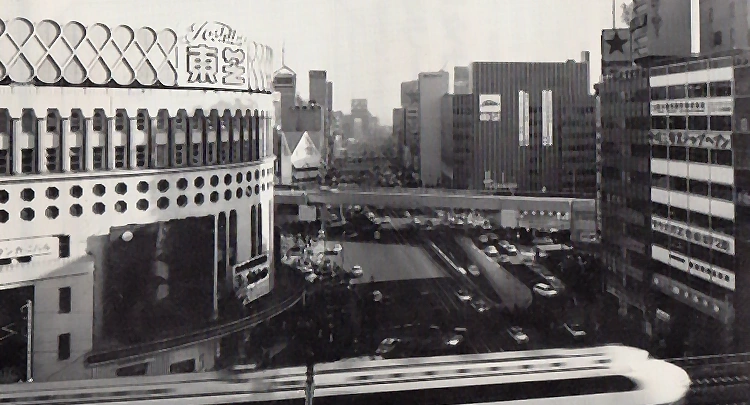
Nihon Gekijo Theater (commonly called Nichigeki) on the left in the foreground bears the “Toshiba” logo. The headquarters of Toshiba Engineering Co., Ltd. is in the Mazda Building on the right in the background. -
〜
Transition to a plant systems enterprise specialized in the design, construction, and maintenance of power generation facilities, substations, motive power facilities, etc.
Amid the excitement generated in Japan by the 1964 Tokyo Olympics and remarkable GNP growth of roughly 15%, Toshiba Electric Engineering and Toshiba Construction merged on an equal footing in 1966, forming Toshiba Electric Construction Co., Ltd., which mainly engaged in the design, construction, and maintenance of power generation, substation, motive power, electric power, communication, and other facilities. Toshiba Electric Construction made a full-scale entry into the field of heavy machinery such as steel, paper, and pulp mill machines while supporting Japan's electric power industry in transitioning from hydroelectric power to thermal power in order to meet the rapidly increasing electricity demand. Receiving many contracts for large-scale power generation facilities, Toshiba Electric Construction established a solid position in the industry. Furthermore, Toshiba Electric Construction restructured its organization in response to the advent of nuclear power. In the 1960s, Japan enjoyed a record period of economic growth dubbed “the Japanese economic miracle” and the Izanagi Boom (1965-1970). However, the first oil shock that occurred in 1973 threw the world economy into turmoil, causing rampant price hikes and inflation in Japan, pushing the country into a severe recession. Greatly affected by the economic crisis, Toshiba Electric Construction participated in the bidding for the construction of thermal power generation facilities, nuclear power generation facilities, and nuclear R&D laboratories in response to diversifying power sources. Furthermore, Toshiba Electric Construction expanded its business to include the development of airport facilities and air route surveillance equipment in response to an increase in air transportation in addition to steel and cement plant facilities. As an enterprise that thrives on technology, Toshiba Engineering strove to enhance its technological capabilities. Accompanying the rapid diffusion of industrial computers and minicomputers, Toshiba Engineering expanded its business to include software development, equipment maintenance, and the development of diverse systems such as steel mill control systems, on-line banking systems, and on-line government systems. While accumulating experience in centralized hydroelectric power facility control, computerized control, thermal power plant engineering, general industrial buildings, and water supply and sewerage systems, Toshiba Engineering actively expanded its overseas operations in collaboration with Toshiba Corporation, including the provision of guidance on the installation of paper mills, their testing, and commissioning as well as the construction design for oil plant facilities.
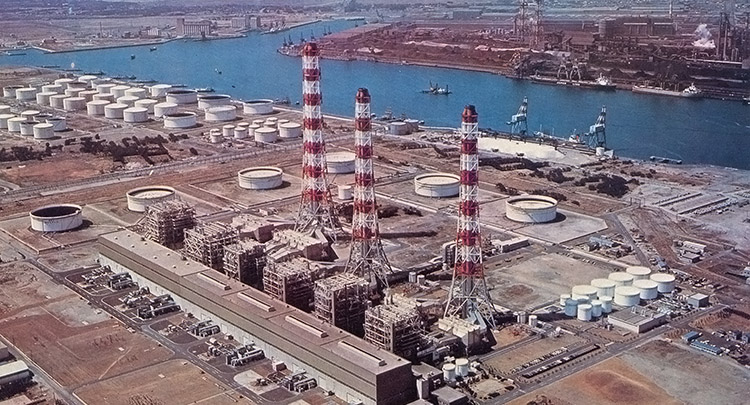
Kashima Coastal Industrial Zone in the 1970s (Kashima Power Station) -
〜
Joining Tokyo Stock Exchange for a further leap forward
The turmoil of the oil crisis triggered a substantial change in Japan's industrial structure. Electronics evolved rapidly, outpacing the conventional steel and heavy chemical industries, while automotive, industrial machinery, electrical machinery, and other mechatronics sectors achieved rapid growth. While demand for thermal power, hydroelectric power, and steel plants dwindled, Toshiba Electric Construction shifted its focus to the construction of nuclear power facilities. In order to improve the corporate image and take the next leap forward, Toshiba Electric Construction changed its name to Toshiba Plant Kensetsu Co., Ltd. in 1978 and became listed on the Second Section of the Tokyo Stock Exchange the following year. Toshiba Plant Kensetsu was promoted to the First Section in 1983, taking its place as one of Japan's prestigious companies both in name and substance. Toshiba Plant Kensetsu achieved much both in Japan and abroad in the fields of industrial plant facilities, airport facilities, public water supply and sewerage systems, and airport lighting while accelerating overseas operations in Asia and elsewhere. Toshiba Engineering operated in three major sectors: computer systems, system services, and plant systems. Riding the wave of computerization, Toshiba Engineering grew into a large-scale engineering firm by leveraging its outstanding technical expertise. In 2001, Toshiba Engineering split into two companies. While Toshiba Engineering focused on the plant business, Toshiba IT-Solutions Corporation (now Toshiba Digital Solutions Corporation) concentrated on the IT business.
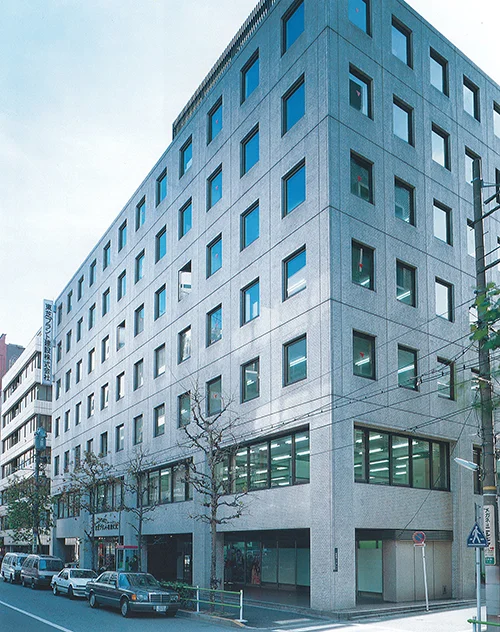
Shinbashi Headquarters of Toshiba Plant Kensetsu Co., Ltd. -
〜
A shift toward an engineering contractor offering total solutions
In 2004, Toshiba Plant Kensetsu and Toshiba Engineering merged to form Toshiba Plant Systems & Services Corporation. As a result, Toshiba Plant Systems & Services was ready to embrace new challenges as an engineering contractor offering total solutions, encompassing engineering, construction, on-site calibration, testing, and commissioning. Despite Japan's protracted economic stagnation dubbed “the Lost 30 Years,” Toshiba Plant Systems & Services has remained committed to innovation and full-scope EPC projects, adapting its business model and organization to the changing market environment and needs. We have continued to grow, aiming to achieve our management vision of “Becoming an excellent company maintaining profitable and sustainable growth.” When the Great East Japan Earthquake hit Japan in 2011, we devoted our utmost efforts to achieving restoration from the disaster, including the recovery of power generation facilities, provision of emergency power supplies, and reconstruction of railroads, airports, water supply and sewerage systems, and factory facilities, contributing to society as an enterprise that supports social and industrial infrastructure. In addition, we stepped up our efforts in solar, hydroelectric, biomass, and other forms of renewable power generation, adapting to the changing business environment. In 2019, Toshiba Corporation succeeded in a takeover bid for Toshiba Plant Systems & Services, with the result that the latter was delisted from the First Section of the Tokyo Stock Exchange and became a wholly owned subsidiary of Toshiba Corporation.
Toshiba Plant Systems & Services will continue to support social and industrial infrastructure, offer safety and security to society, and advance boldly into the future.
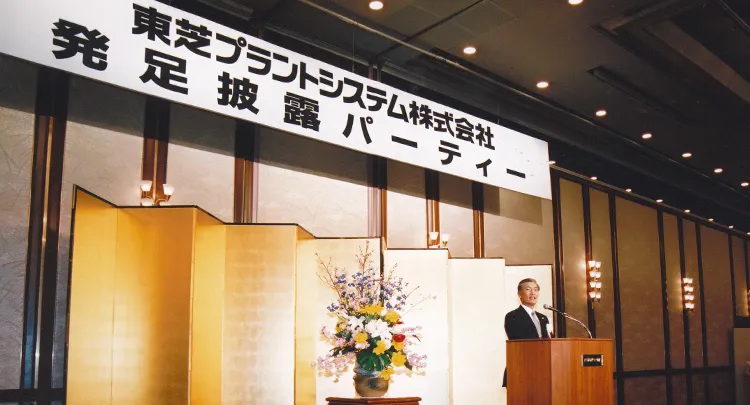
Ceremony inaugurating Toshiba Plant Systems & Services Corporation






































































































